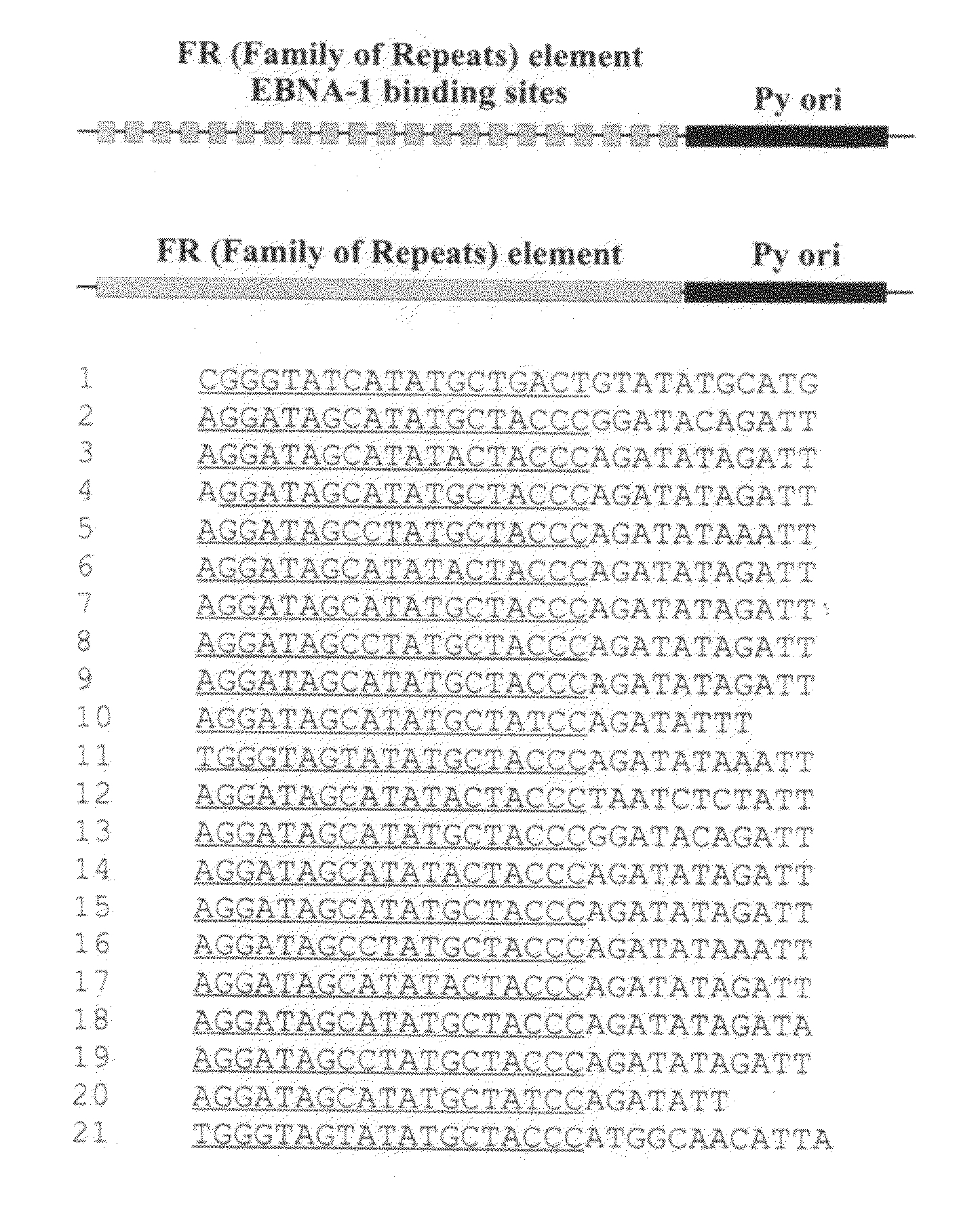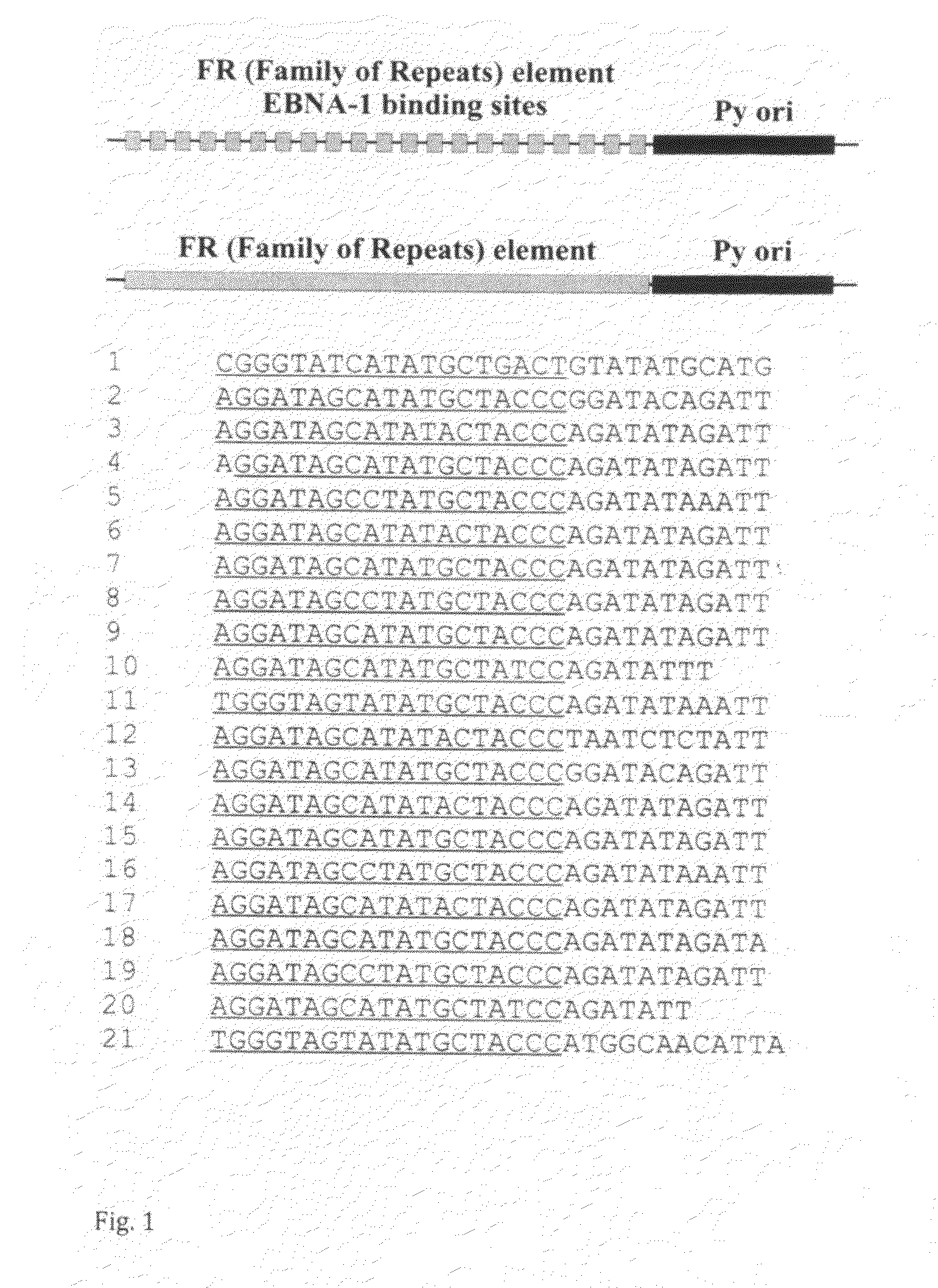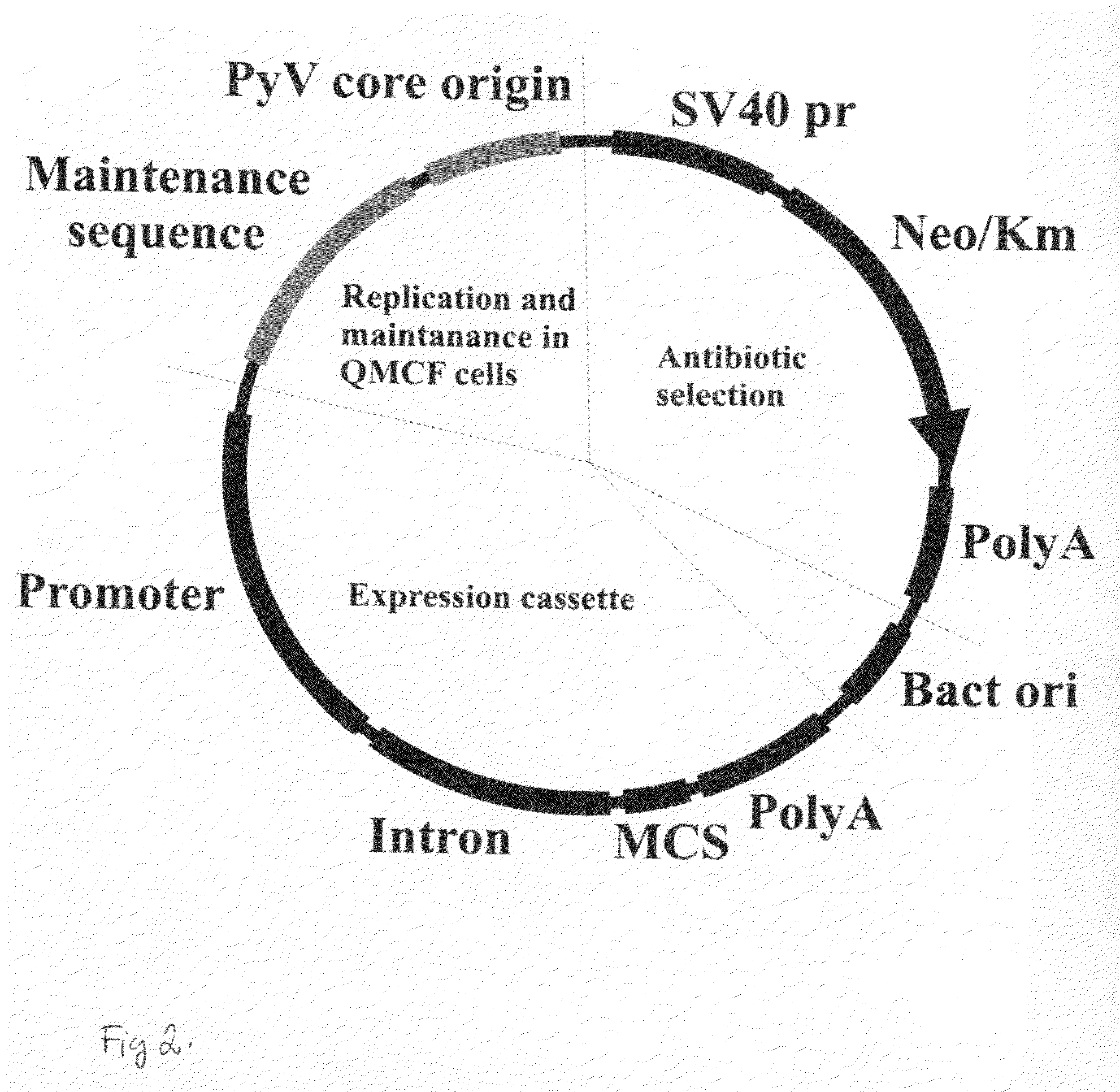Viral expression plasmids for production of proteins, antibodies, enzymes, virus-like particles and for use in cell-based assays
- Summary
- Abstract
- Description
- Claims
- Application Information
AI Technical Summary
Benefits of technology
Problems solved by technology
Method used
Image
Examples
example 1
PyV Hybrid Origin Constructs Including PyV Core Origin and EBV FR Element and Construction of Plasmids for Extended Episomal Maintenance
[0103]FIG. 1 schematically shows mouse polyoma virus core origin of replication (SEQ ID NO: 2) and FR (Family of repeats) element. Here, FR element (SEQ ID NO: 1) contains 21 possible EBNA-1 binding sequences. Table 1 above and FIG. 21 show the novel QMCF-plasmids according to this disclosure. pQMCF1 contains CMV promoter-driven expression cassette. pQMCF2 contains EF1α-HTLV promoter-driven expression cassette. EF1α-promoter GenBank J04617.12 and HTLV leader sequence GenBank AB513134). pQMCF-3 contains heIF4a promoter-driven expression cassette (heIF4a GeneBank J04617.1) pQMCF-4 contains β-actine promoter-driven expression cassette. pQMCF-5 contains RSV-LTR promoter-driven expression cassette.
example 2
Comparison of BPV-1 Mme and EBV FR Element in Providing Segregation / Partitioning Function to the PyV Core Origin Plasmids
[0104]Maintenance of plasmids containing PyV core origin, MME or FR, selection marker (geneticine resistance) and green fluorescent protein marker (either long half-life EGFP or short half-life d1EGFP) was analyzed by flow cytometry. The flow cytometry analysis was conducted in the COP5EBNA1 / Puro cell line with plasmid containing PyV core origin, FR-element, selection marker (geneticine resistance) and green fluorescent protein marker (short half-life d1 EGFP) (pFRG*). In this case the replication function of the plasmid is provided by PyV core origin and LT protein and the segregation / partitioning function is provided by FR-element and EBNA1 protein of the EBV. The results are similar to the flow cytomery analysis with plasmids pMMEG and pMMEG* in COP5E2 / Puro cell line. Transfected cells were grown in continuous culture in the presence or absence of geneticine fo...
example 3
Production of Recombinant Proteins and Generation of Cell-Based Assay (CBA) Test-System for Development Drug Candidates
[0106]We have constructed set of new expression plasmids containing polyoma virus (PyV) core origin (SEQ ID NO: 2) in combination with Family of Repeats (FR) of Epstein-Barr Virus, an element for extrachromosomal genome maintenance of Epstein-Barr virus (EBV) or MME (minichromosome maintenance element) from Bovine Papilloma virus (BPV-1) in proliferating cells. (construction of the plasmids is described above and in previous patent application Ser. No. 11 / 351,809 which is incorporated herein by reference; and plasmids are shown in FIG. 22). Such hybrid origin uses mouse polyomavirus (PyV) Large-T antigen for initiation of plasmid replication during S-phase of the cell cycle and EBV EBNA-1 or BPV E2 protein for segregation / partitioning of the extrachromosomal plasmid into the daughter cells during cell division. We engineered six different promoters—four human origin...
PUM
| Property | Measurement | Unit |
|---|---|---|
| Pressure | aaaaa | aaaaa |
Abstract
Description
Claims
Application Information
 Login to View More
Login to View More - R&D
- Intellectual Property
- Life Sciences
- Materials
- Tech Scout
- Unparalleled Data Quality
- Higher Quality Content
- 60% Fewer Hallucinations
Browse by: Latest US Patents, China's latest patents, Technical Efficacy Thesaurus, Application Domain, Technology Topic, Popular Technical Reports.
© 2025 PatSnap. All rights reserved.Legal|Privacy policy|Modern Slavery Act Transparency Statement|Sitemap|About US| Contact US: help@patsnap.com



